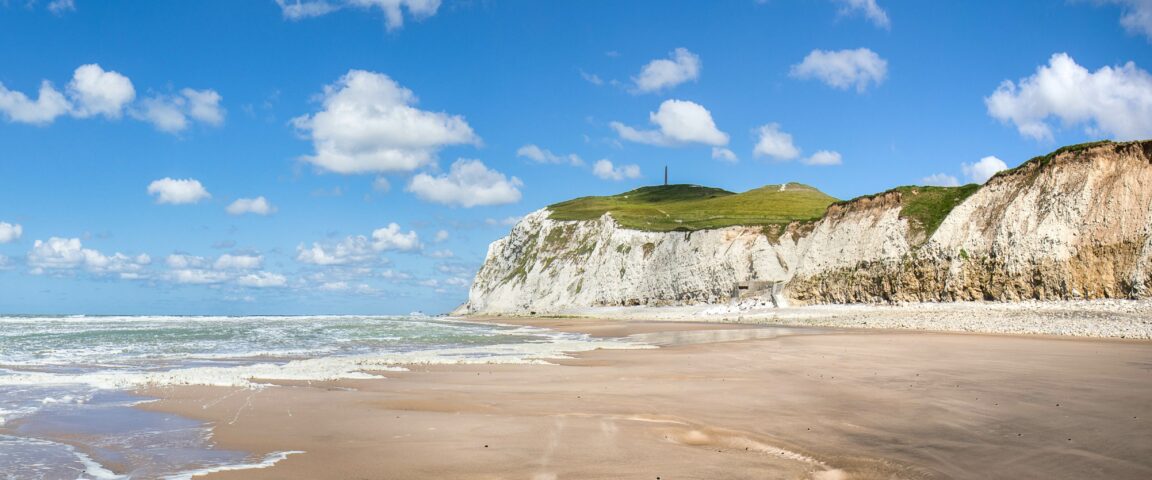Bay of Wissant
The bay of Wissant is a natural wonder located between Cap Blanc-Nez and Cap Gris-Nez. Known for its rugged beauty, it is characterized by sandy beaches, dunes and unspoiled natural areas.
Wissant
The site is accessible all year round
Free
Dogs welcome
Facilities
- Accessible by public transport
- Café
- Picnic area
- Toilets
- Car parking
- Viewpoint
- Disabled parking
- Cycle parking
- Visitor information available
Geosite details
The bay of Wissant is a natural wonder located between Cap Blanc-Nez and Cap Gris-Nez. Known for its rugged beauty, it is characterized by sandy beaches, dunes and unspoiled natural areas. This site is home to many species of migratory birds, making it a great place for birdwatchers and nature photographers. Visitors can explore trails that wind through the dunes, offering a glimpse of the local flora, including rare and protected species.
The bay also has interesting geological features, such as marine deposits that bear witness to climate changes over millennia. Walking along the beach, it is possible to observe fossils and remnants of marine life from the past. The bay is also a popular spot for water sports such as windsurfing and kayaking, thanks to its favorable wind conditions.

